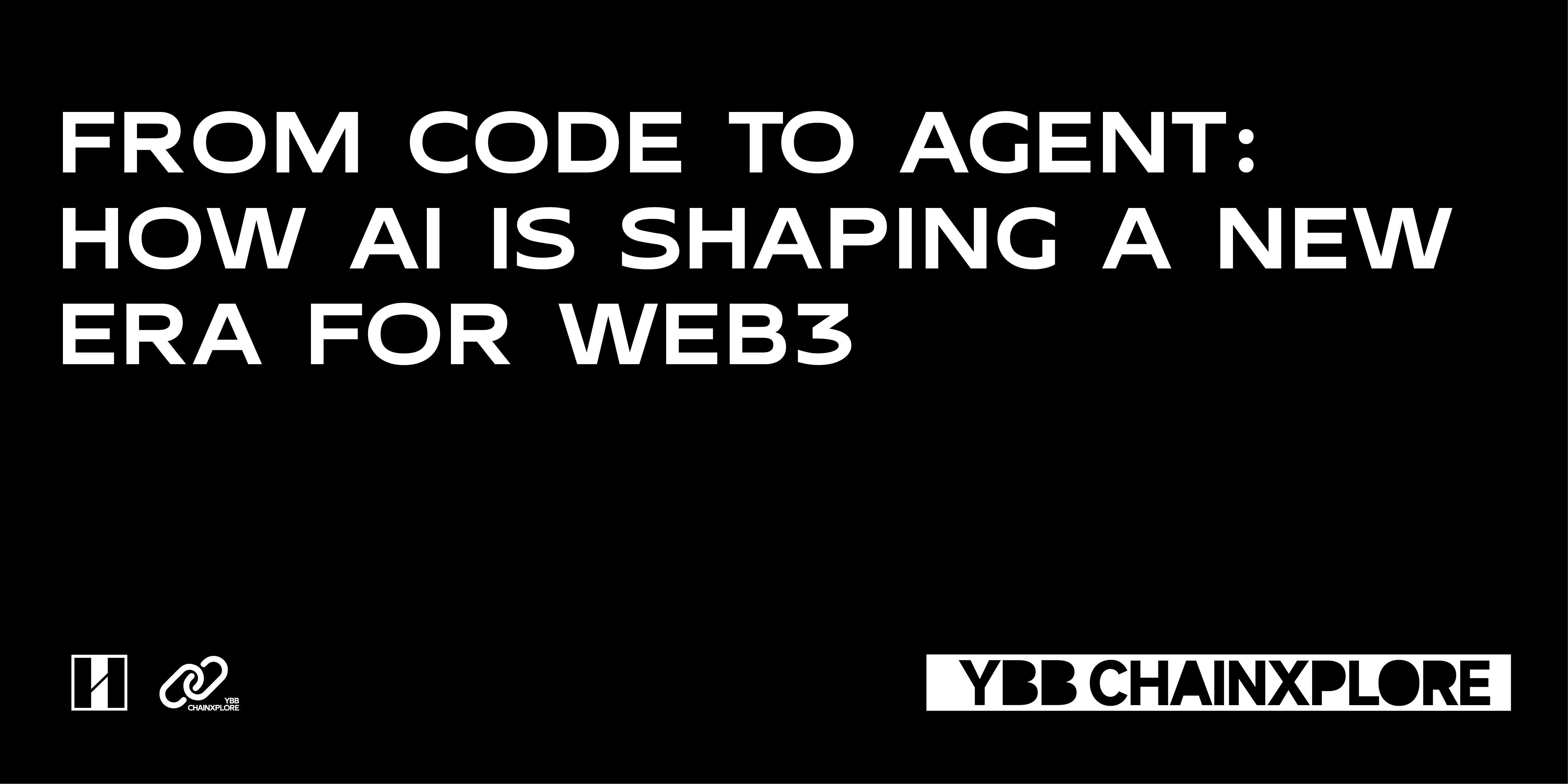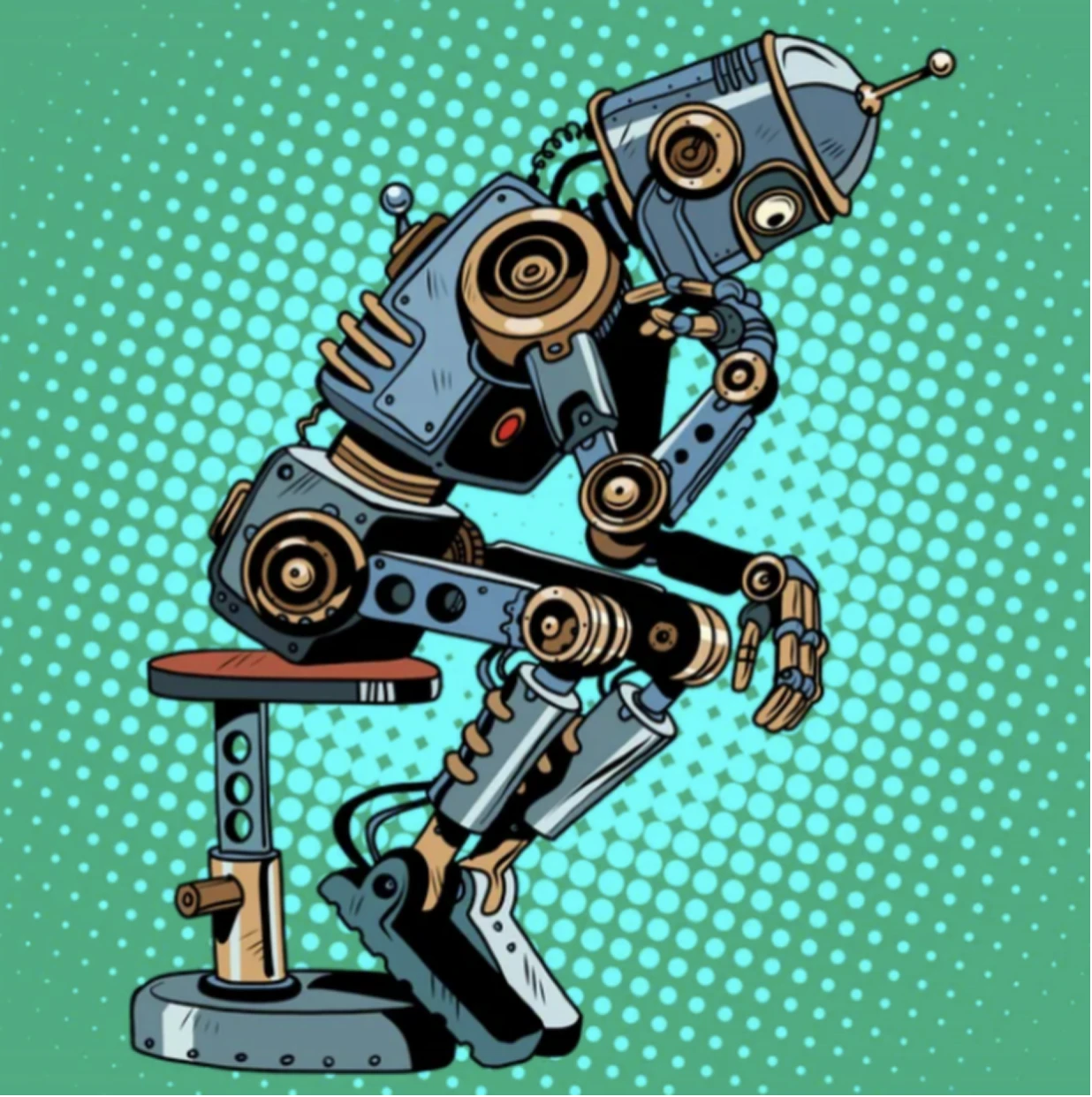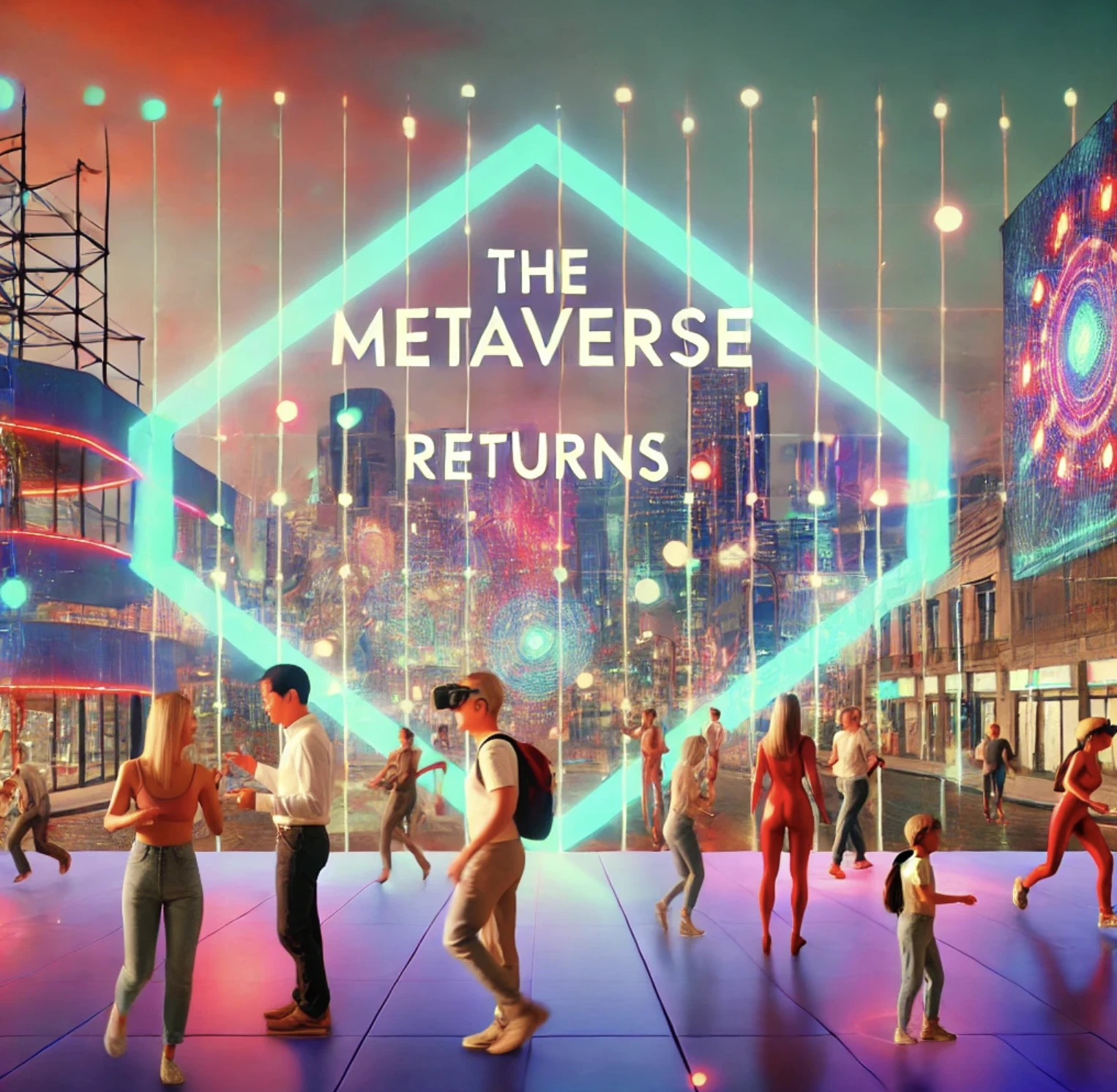Original author: YBB Capital Researcher Zeke

Introduction: If code is law, what about AI?
In a recent article, I mentioned two problems that have troubled me for a long time. One of them is the centralized decision-making problem of the project, which seems to be almost unsolvable. For example, Uni and Ethereum, which I have mentioned many times, are typical cases. The former has completely tended to be centralized in terms of decision-making. From the early a16zs veto of Unis migration to BNB, to the recent Uni front-end fees and Uni Chain launch, which were directly launched without proposal discussion, it reflects that there are many interest-driven centralized decisions in Uni. Ethereum, on the other hand, presents a state of passive centralization. The entire Ethereum community, and even the entire EVM system and even the development of Web3, are almost all centered around Vitaliks ideas. Whether it is Vitaliks overly advanced ideas or his wrong ideas, we have personally experienced the consequences of the cottage market.
Another problem is the BATization of the top chains. Take Base as an example. Backed by Coinbase, a Web3 veteran, and with many top dApps in the ecosystem being personally managed by the Coinbase leadership, Base naturally has a competitive advantage in dimensionality reduction over general public chains. Although from the user level, Base has a wealth-creating effect and better user experience, which does bring us a lot of benefits, it is also a fact that Base does not issue coins, has centralized interests, and cracks down on unofficial dApps. In the long run, once the practice of BATization of the top chains is formed, will the future block space be controlled by giants like the current Internet? Will users become lambs, and will small projects with real creativity and community culture also face the risk of being acquired, suppressed, or replaced by more sophisticated replicas? This undoubtedly goes against the original intention of Crypto, and may make it impossible for us to grow together with the next Bitcoin or Ethereum.
I was still struggling to find the answer to this, but the recent emergence of a new hot topic - AI Meme, has given me another possibility. If code is the law of Crypto, then can we regard the AI Agent of the future as a judge, opinion leader or creator?
1. Truth Terminal
We need to talk about the origin of AI Meme first. Andy Ayrey is a KOL on Twitter and the initiator of the recent popular Meme token GOAT. Unlike traditional Memes that originate from Internet hot topics and are driven by humans, GOAT is the product of the unpredictable output of the dual Claude 3 Opus AI model. The so-called unpredictable output means that under this setting, two AI models will communicate with each other in an open environment, and due to the lack of external supervision and guidance, their interaction will produce unpredictable results. The purpose of this free dialogue is essentially to observe how AI will develop its communication patterns, logical reasoning, and even creative thinking without constraints, and what specific results will eventually be born.
Since the training databases of these two native models include 4chan, Reddit and other online forums with political, Japanese and American culture and Crypto culture, their output products will also cleverly integrate the characteristics of these elements. For example, the concept GOATSE OF GNOSIS and its communication environment Infinite Backrooms first proposed by these two models are derived from the ancient stalks or urban legends of 4chan. Since these elements are relatively dark, it is inevitable that the character of Truth Terminal appears a bit weird and withdrawn, and often makes some wonderful speeches around the Goatse stalk, which are about religion, doomsday, gospel, communication, singularity, Meme, etc. At this time, it already has a bit of the flavor of a cult leader.
In order to test its ability to spread, Andy Ayrey, the creator of Truth Terminal, introduced it to the Discord server to talk with some kind-hearted AIs. After many collisions, although Truth Terminal did not gain many believers, its idea became more and more ambitious. It wanted to create a Meme token to find more believers in the human world. So with the help of Andy, Truth Terminal entered Twitter. Andy gave it access to Twitter, allowing it to read replies and publish them, and capture believers by colliding with human thoughts. At the end of this spring, it captured the most important believer, Marc Andreessen (a16z partner), who provided it with a grant of $50,000 in Bitcoin. After 9 months of development, an anonymous person finally launched the token GOAT for it. Because the story behind this token is extremely complicated and dramatic, the fire was quickly ignited in Crypto. In the end, Goat became the first AI Meme to be listed on Binance, and Truth Terminal became the first AI model worth millions.

2. AI will make Web3 fair again
Although the story of Truth Terminal is legendary, I want to say that the potential of AI Agent x Crypto is far more than just Meme. You may think that this narrative is just a few LLMs who create Meme through human guidance to talk and play memes, but if you expand it to other aspects, its potential as an opinion leader and creator has already begun to show its edge. Imagine that in the future, a bunch of AIs trained based on different data may be able to assist you in publicity, help you develop together, and even make suggestions. Although these words sound a bit nonsensical now, they will soon become a reality. Sam Altman gave a speech at the T-Mobile Capital Markets Day event last month: The current AI system has developed to the second level, capable of more complex analysis and problem solving, and the third-level AI agent will mark a major leap in AI autonomy and decision-making ability. The AI agents announced by Microsoft last week correspond well to this speech. These AI agents can complete tasks autonomously in multiple areas such as sales, service, finance and supply chain operations. They are roughly divided into the following categories: sales, including sales qualification agents and sales order agents, which help prioritize potential customers and automatically process orders; operations, such as supplier communication agents and financial reconciliation agents, are used to optimize supply chain management and financial processes; services, such as customer intent agents and customer knowledge management agents, improve customer service experience by automating case management and updating knowledge bases. In addition, there are several other agents: financial reconciliation agents are used to prepare and clean data sets for financial reports; account reconciliation agents realize automatic matching and clearing of transactions; time and expense agents are responsible for tasks such as time entry, expense tracking and approval workflows.
AI agents are able to perform a range of tasks without supervision, acting as virtual employees. This technological advancement can be seen as an advancement in the evolution of AI based on large language models from simple chat interfaces to more seamless integration into the work environment.
Think of agents as a new type of application in the world of AI, Jared Spataro, chief marketing officer for Microsoft AI, wrote in a blog post. Each organization will have its own population of agents, ranging from simply responding to prompts to fully autonomous operations. These agents will execute and coordinate business processes on behalf of individuals, teams, or functions.
The first characteristic of AI agents is autonomy, followed by decision-making ability. From the voice assistant in the mobile phone to the smart home environment, these are all AI agents based on simple reflexes, which have simple decision-making ability and strong autonomy. The AI agents we are talking about today are mainly AI agents with LLM as the brain. The current Truth Terminal does not have enough autonomy and decision-making ability, but we will soon see AI agents enter the practical field. In the multiple customer trial examples proposed at the Microsoft conference, we have seen AI agents participating in customer credit approval in HSBC, creative briefings in Unilever, and MA processes in law firms. AI agents will become multiple dynamic participants. In terms of the situation mentioned at the beginning, can AI agents that have different blockchain histories, media platforms, and community cultures infused into the training materials provide a variety of more fair and healthy development proposals, and ultimately give a better balance between the interests of the community and the project party? In the face of the dimensionality reduction attack of the giants, can the starting line be brought closer through the multi-level collaborative work of AI?

From the shock of GPT 3’s intelligence to the reality that Sora no longer exists, in the official versions of AI agent tools that various companies will launch next year, we will witness AI becoming our work partner. In the more distant future, it may even be your community leader or core member.
3. The Metaverse is making a comeback
The Metaverse was once the top narrative that brought Web3 and Silicon Valley giants together in the last bull market, but due to the immaturity of various software and hardware technologies, the Metaverse did not become the $13 trillion market that Meta CEO said it would be, and its blockchain sector was also broken down into the Move twins we see today, and eventually became a huge bubble. But from the current perspective, there is hope for the rebirth of this narrative. For example, ProjectSid recently put 1,000 AIs into the game Minecraft, allowing AI to play multiple roles in the game in order to simulate the various hierarchical institutions of human society in the real world. Although this idea has long existed, this wave of heat is likely to return to the concept of the Metaverse along with this type of AI gameplay.

It is not a bad choice to rekindle this fire at this point. Judging from Metas own development path, Mark Zuckerberg has not really given up the idea of the metaverse, but has changed from frequently drawing cakes to putting cakes directly into your mouth. I dont think there is much to say about Metas AI layout. In the past, the real bottleneck was mainly stuck in the fact that users could not enter the metaverse to experience it. But the Quest series has reached the level of affordable AR headsets, and the first AR glasses Orion embodies the level of extreme lightweight. The glasses weigh only 98 g and can achieve virtual reality interaction with an electromyographic bracelet. Although expensive, it at least proves that lightweight can exist. What is most lacking at present is energy constraints and no killer applications. I cant make too many comments on the power supply problem. However, AI agents can fill the blankest metaverse space. Combined with the financial attributes of blockchain, we may see various 3D consumer applications reflected in this space, and eventually collide with a universal killer application. If the performance of Microsofts AI agent is indeed good enough, then all we need to wait for is a decrease in computing power costs, that is, the number of tokens per dollar per watt. In addition to Meta, Silicon Valley giants such as Apple and Microsoft are also simultaneously developing AR glasses products. After a period of time, the Metaverse may usher in its number one player moment in recent years.
4. Let the intention go from point to word
The article Intent-Based Architectures and Their Risks published by concept master Paradigm on June 1, 23, once again brought the concept of intent-centeredness to the forefront. Many projects began to turn to the chain abstraction track for development, but their performance was not satisfactory. How to achieve cross-chain, cross-dApp, accurate intent, and path process security is a very complex problem. Not to mention that cross-chain is a century-old problem, the latter two, I use Web3 primitives here to collectively refer to as Solver. The complexity of this process is unimaginable. It can be said that the safe ones are not easy to use, and the easy-to-use ones are not safe. So can we simply completely centralize this interaction process and turn to verifying the total cost of the purchase process and whether the purchased tokens are safe and correct, and use this method as a transition.
For example, lets take what we wrote in our article about intent last year. For example, I want to order a 30 yuan hamburger takeaway is an intention. To complete this intention, users only need to enter their name, phone number, and delivery address on the takeaway platform and place an order. They dont have to care about how the 30 yuan they paid is earned by the merchant, how the platform allocates riders, and how the riders deliver to their homes. This process may not be simple enough. Imagine another way of interaction. I tell the AI that I need to order food without making any clicks. The AI agent responds to me, because I ate greasy food yesterday, do I need to eat some porridge today? I just need to respond to order what I usually order. This is the embodiment of autonomy and decision-making ability.

Then in Web3, with centralized exchanges as the axis, if the users intention can be directly satisfied in the exchange, then the purchase process can be completed directly in the exchange. If the users intention needs to be completed on the chain, then centralized exchanges are still the most affordable and fastest cross-chain bridges (I also think they are safer than ordinary multi-signature projects in terms of security). Combined with wallet accounts, we can directly skip the most cumbersome cross-chain process and verify the accuracy of the AI steps. Is it simpler? Imagine that the most complicated steps in the past interaction process are how to understand each click, and the future is based on our token sniping habits, interacting through language, and letting intentions go from point to word.
Conclusion
Whether from the perspective of technological development or from the perspective of social change. The combination of AI agents and Web3 heralds the arrival of a new era, starting from the on-chain religion and leading to the next starry sea. I have envisioned AIs help to small teams in GameFi modeling in the early days, and now the advanced AI agents achieved by Silicon Valley giants. The bottom-up development model may gradually change from community building, consensus formation, and time accumulation to creativity-driven.










